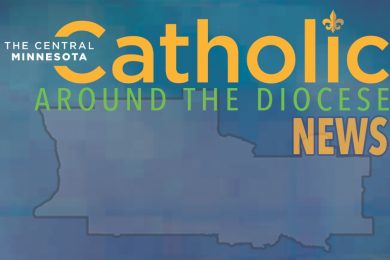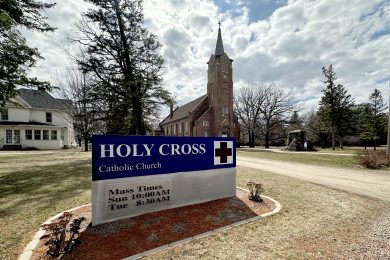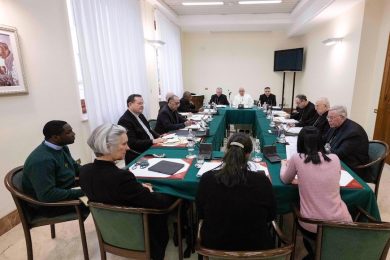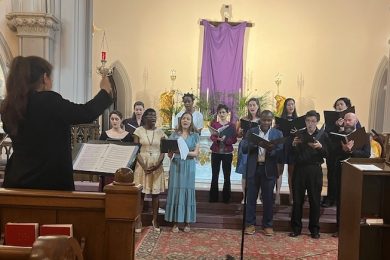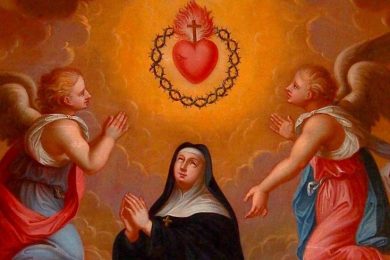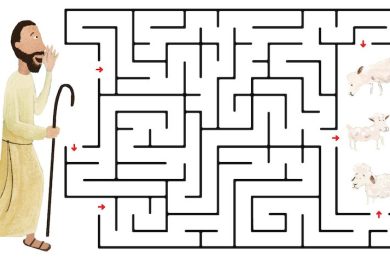By Bishop John M. Botean | Catholic News Service
It is tempting to assert that the ecumenical dimension of the synodal journey is the most comprehensive of them all, since it is those who are most closely related to the Catholic Church in the bond of baptism who have much to share with us from their experiences.
Insofar as these “blood relatives” remain separated from us as regards full eucharistic communion, those things which caused and continue this separation are matters of concern for the Catholic Church as it looks at itself. In some cases, the differences between Catholics and other Christians are more dogmatic; in others, they are more concerned with Church governance, in which the path to synodality plays a critical role. Differences in governance are not merely administrative but go to the very identity of the Church as the body of Christ.
The relationships between the Catholic Church and other Christian communities exist on many levels, from formal, international and national dialogues to local ecumenical and clergy groups.
Perhaps, however, it is the relationships individuals have with each other that play the largest role in discerning the will of the Spirit, who is not absent from these groups. Recognizing that we share “one Lord, one faith (in Jesus Christ), and one baptism” (Eph. 4:5) can be inspiring and enlightening to the extent we take this common element seriously. The path toward a synodal church means that all Catholics are invited to take upon themselves the task of getting to know their neighbors in prayer and worship as well as in dialogue.
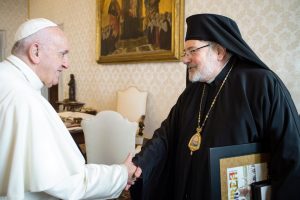
Catholics are in some respects closer to some denominations than to others. It is perhaps those closest to us with whom we can “journey together,” gathering from their experience what is most useful in setting out on our own synodal path. Sometimes that experience will point out a direction in which the Catholic Church may travel, but other times its direction may best be discerned by way of contrast.
For instance, Pope Francis has stressed that a synod is not a parliament. However, the Episcopal Church in the USA, to take one example, is about to gather in June 2022, for its 80th General Convention, which is explicitly a legislative body. While, historically, synods have indeed legislated, it is not likely that journeying together with those Christian bodies that do govern themselves by “majority rule” will result in the Catholic Church adopting their practices entirely. This does not mean we cannot be instructed and inspired by what they do, however.
The Eastern Orthodox churches stand in a special place in relation to the Catholic Church insofar as we share not only baptism, but the priesthood and all the other sacraments with them as well as a common veneration of Mary, the Most Holy Mother of God.
These churches have an explicitly synodal structure, but it is balanced by the existence of primacy within that structure. Each Orthodox Church is headed by an archbishop or patriarch, but he can never act without the consent of his holy synod, the central governing body of the Church. A patriarch is never a monarch; he exercises primacy among the bishops and is not considered to have jurisdiction over each and every member of his particular church.
Moreover, unity among the Orthodox churches is achieved by consensus, seen in the communion of each patriarch with the others. As a consequence, church unity is somewhat more fragile to maintain than in a church with a strong central authority. This is currently most visible in the painful rupture of communion between the Churches of Constantinople and Moscow over the recognition of an autocephalous (autonomous) Church in Ukraine.
While the Catholic Church has much to reflect on and learn from in Orthodoxy in particular, it is here that we see the unique primacy of the successor of the Apostle Peter in its most significant capacity: that of ministering to the unity of the entire Christian Church and strengthening each church in its leaders, as Jesus indicated: “Simon, Simon, behold Satan has demanded to sift all of you like wheat, but I have prayed that your own faith may not fail; and once you have turned back, you must strengthen your brothers,” (Luke 22:31-32 NABre).
This ministry of unity, important as it is, has not always been carried out in the ways to which Catholics have become accustomed over the past number of centuries, and this is reflected in the manifold ways that churches and ecclesial communities have found to organize themselves and maintain an inner cohesion. With this in mind, it would be well to consider afresh the invitation prophetically extended by St. John Paul II in his 1995 encyclical, “Ut Unum Sint,” that the various Christian communities help him “to find a way of exercising the primacy which, while in no way renouncing what is essential to its mission, is nonetheless open to a new situation,” (“Ut Unum Sint” 95, emphasis added).
In short, it is by “looking around” that we can best “look within” in the process of becoming a more synodal church.
Bishop Botean is the head of the Ohio-based Romanian Catholic Eparchy of St. George.


